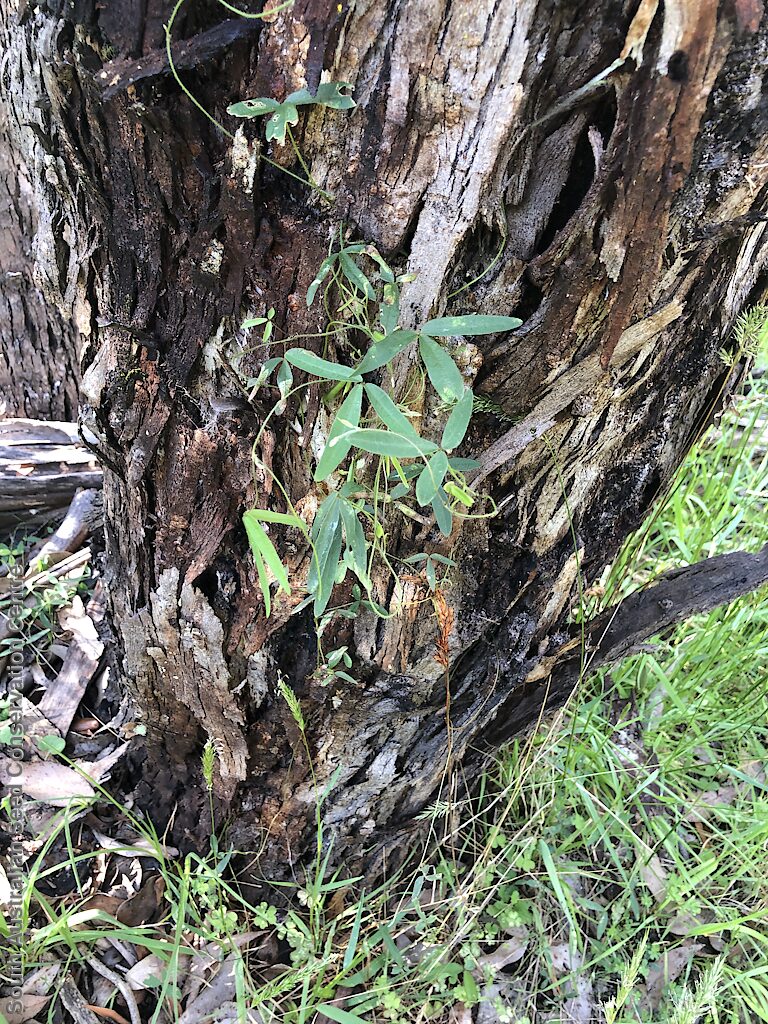
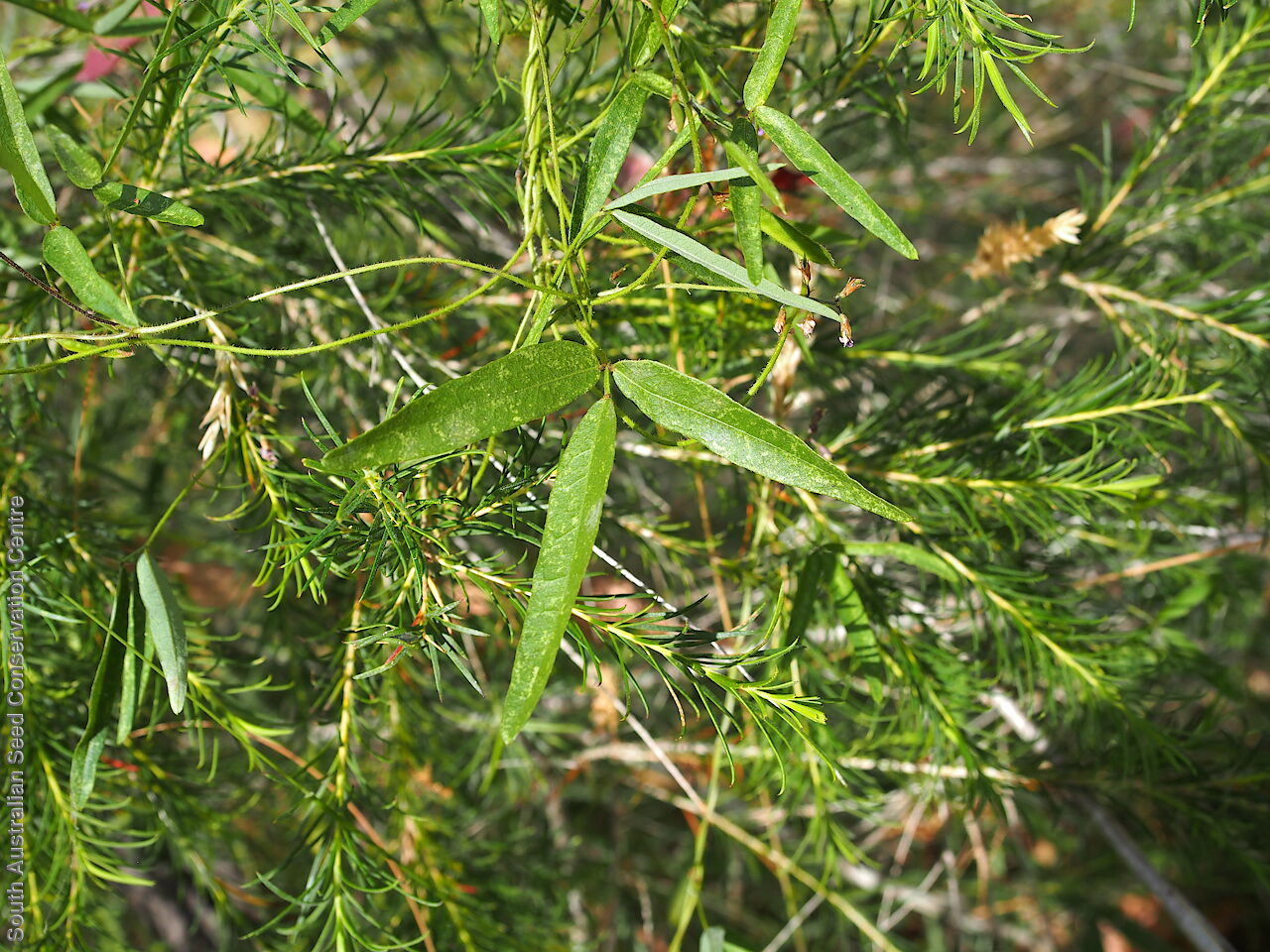
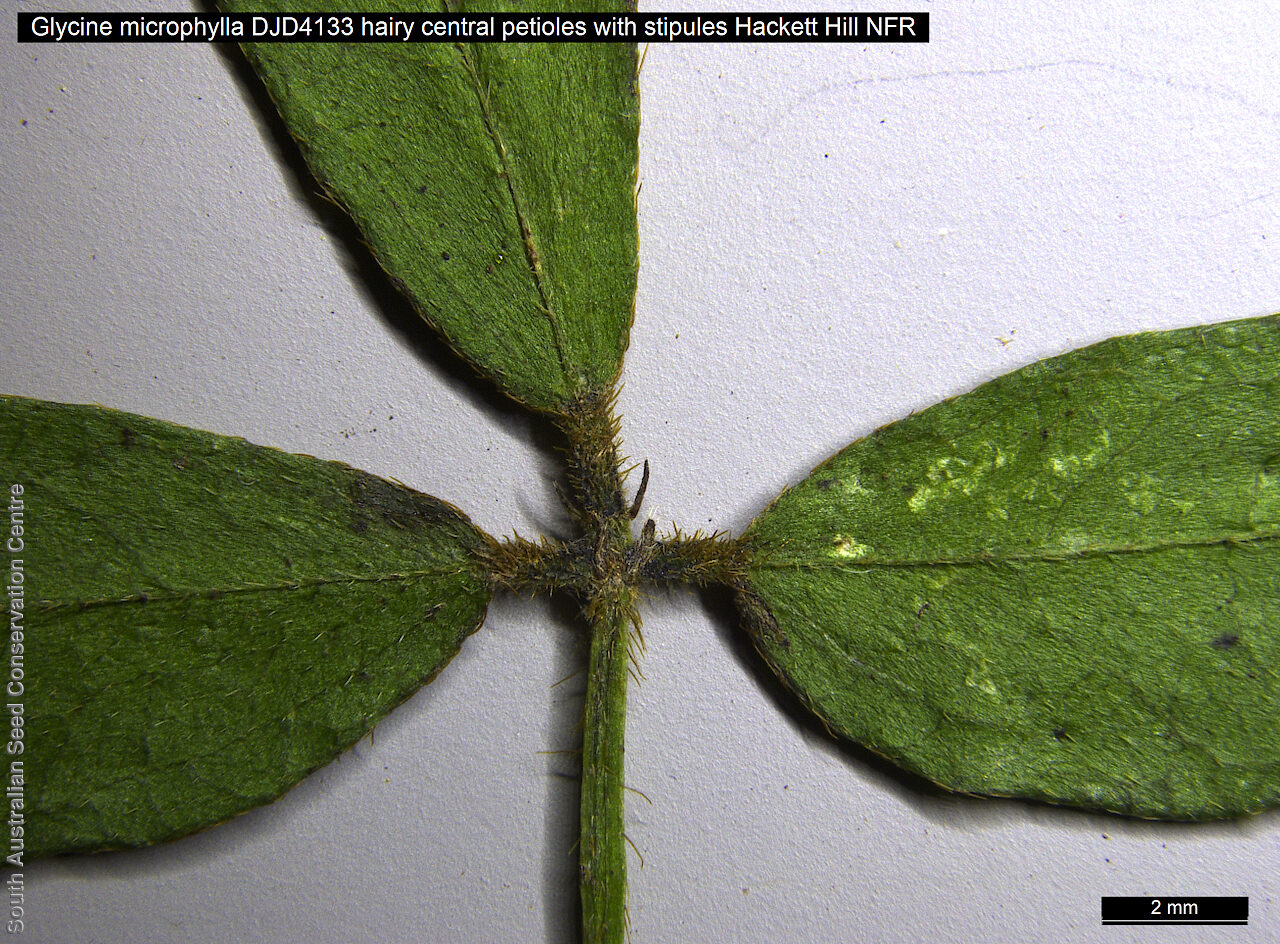
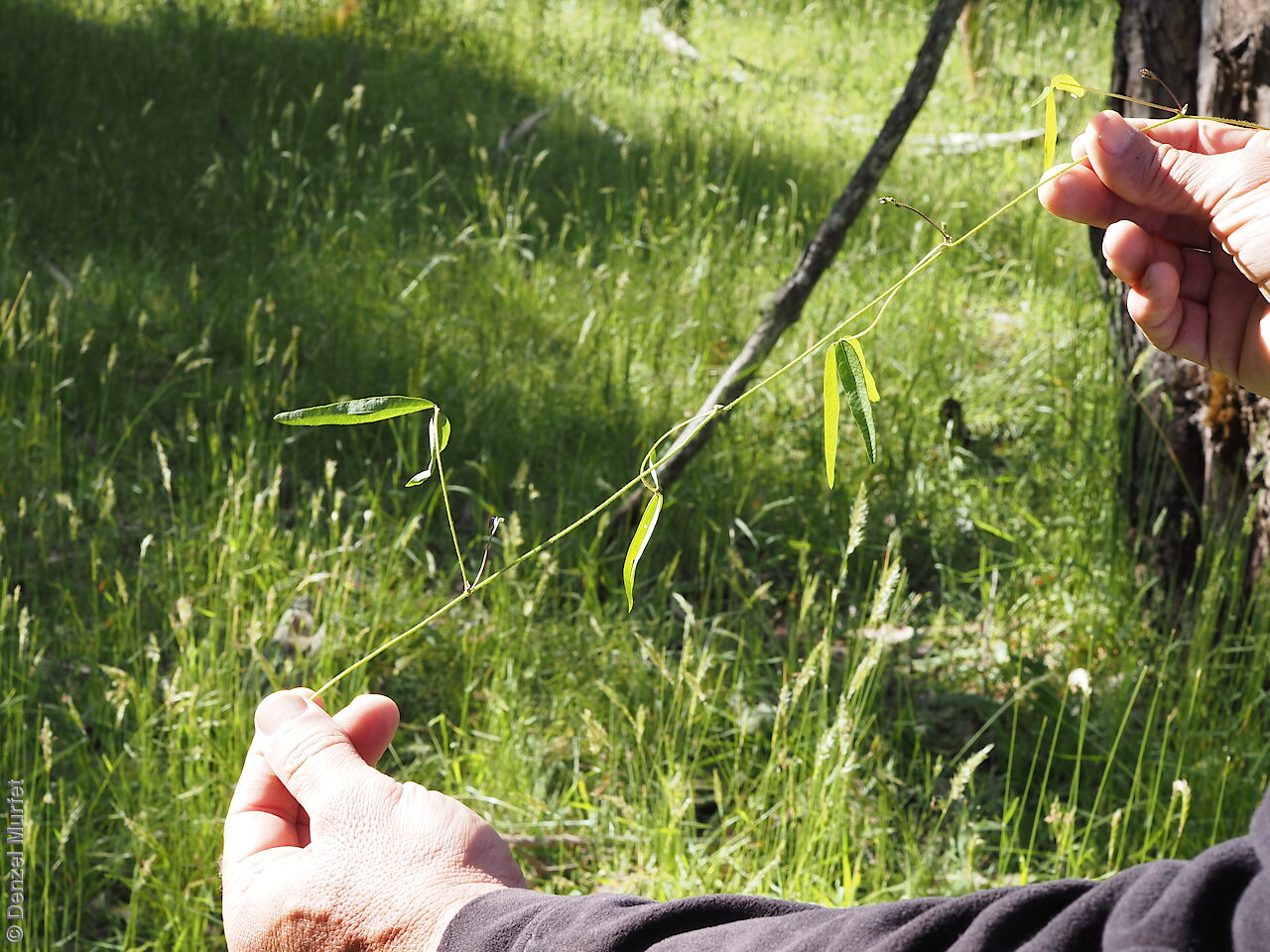
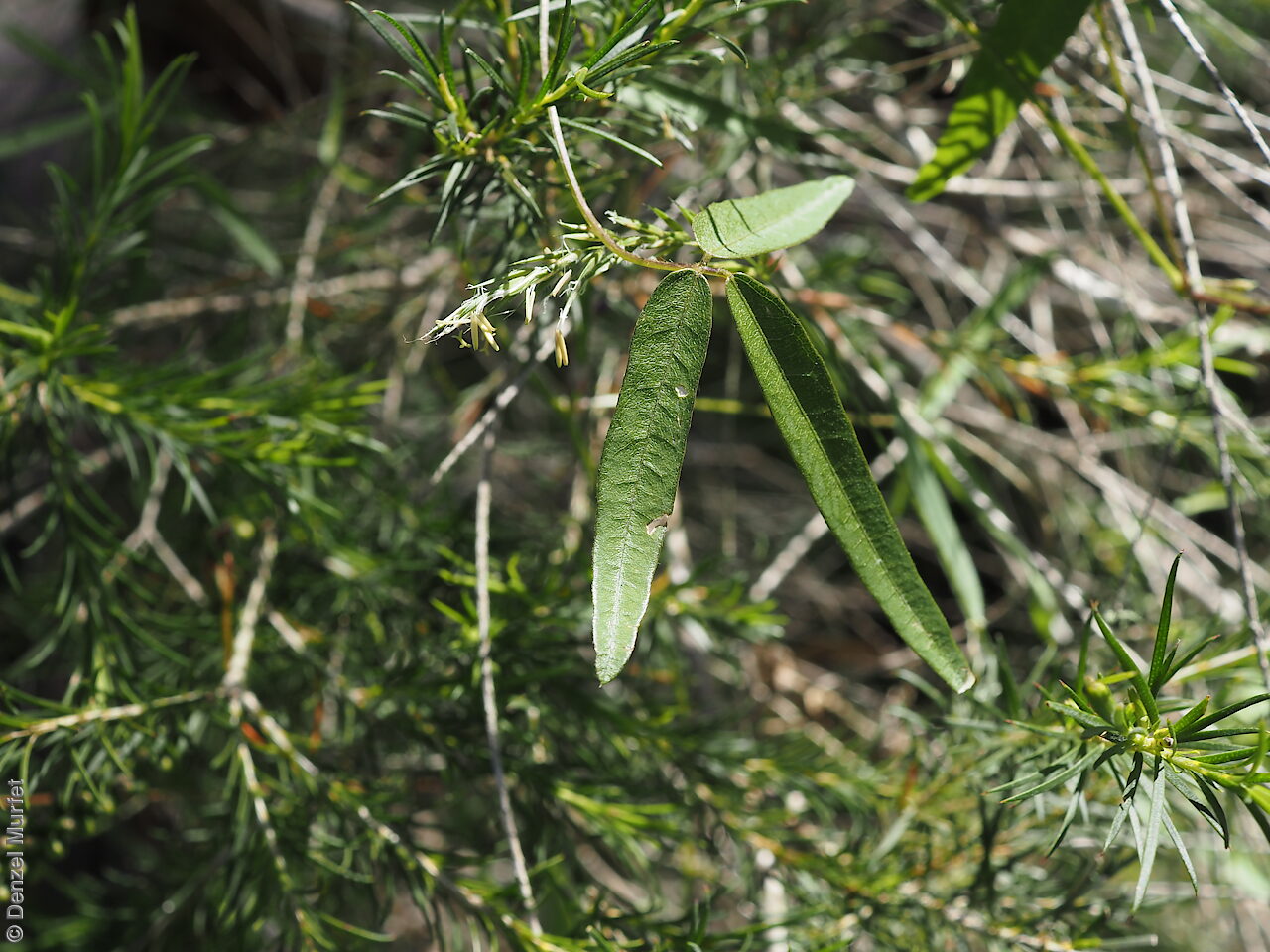
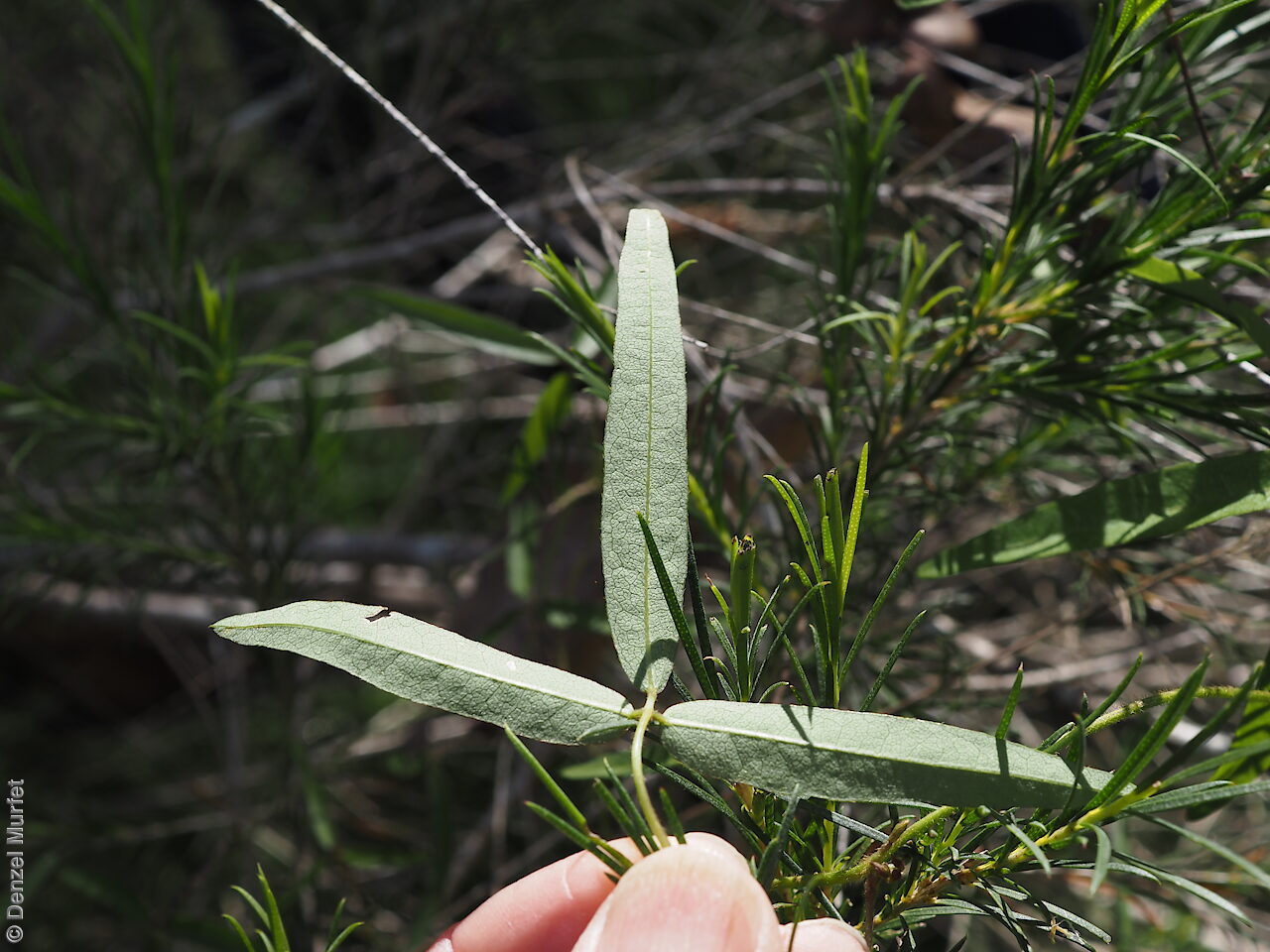
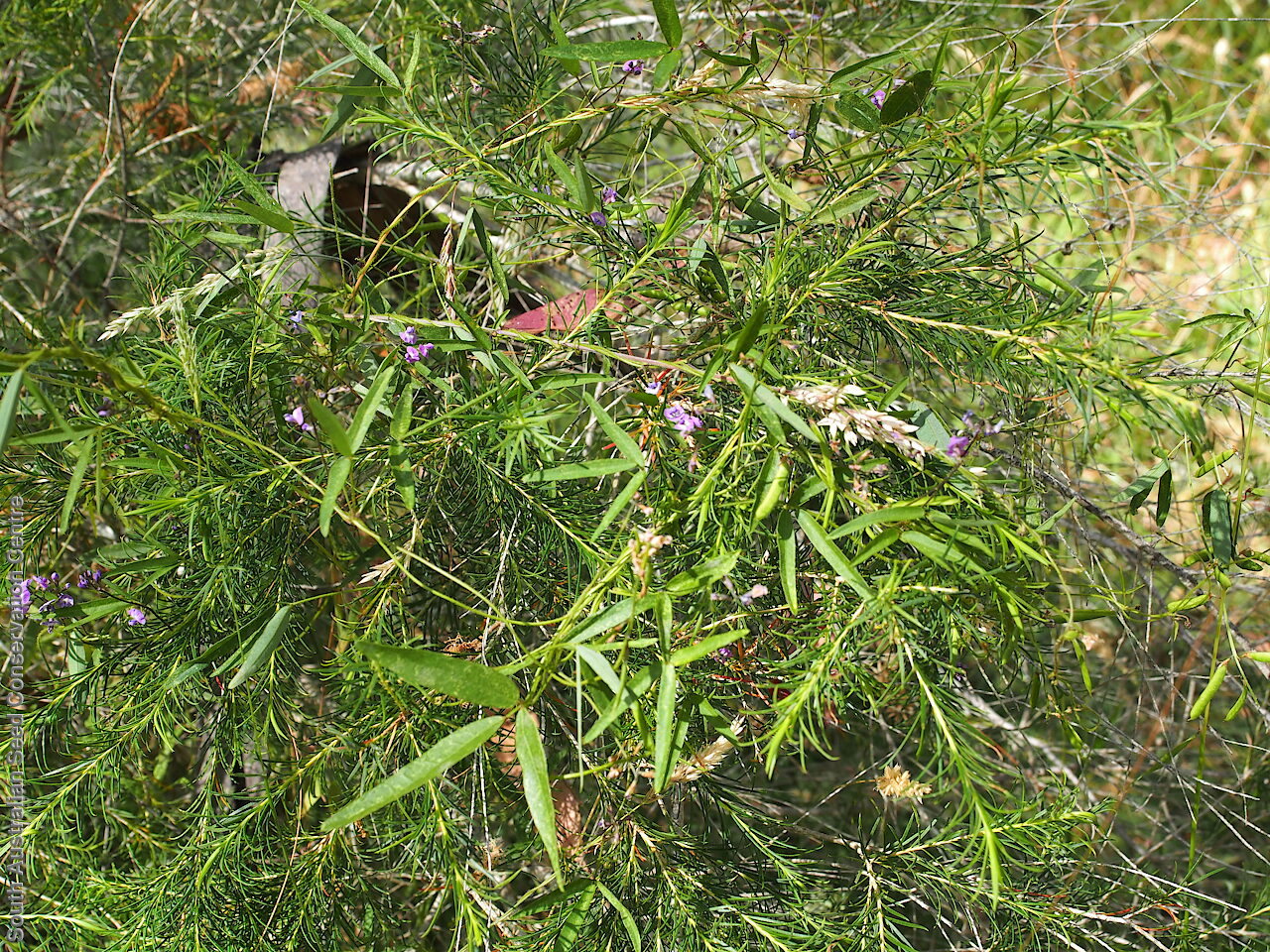
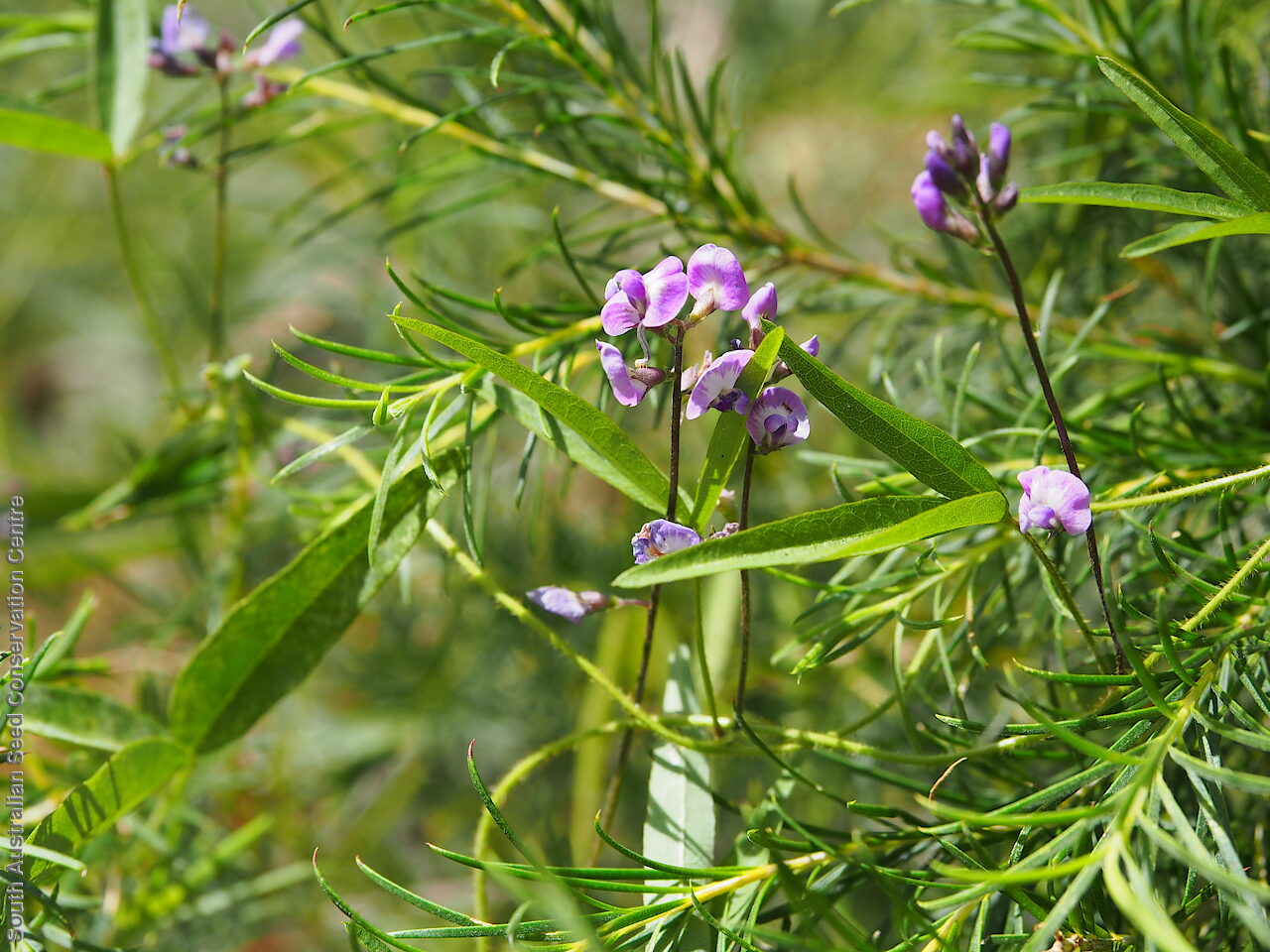
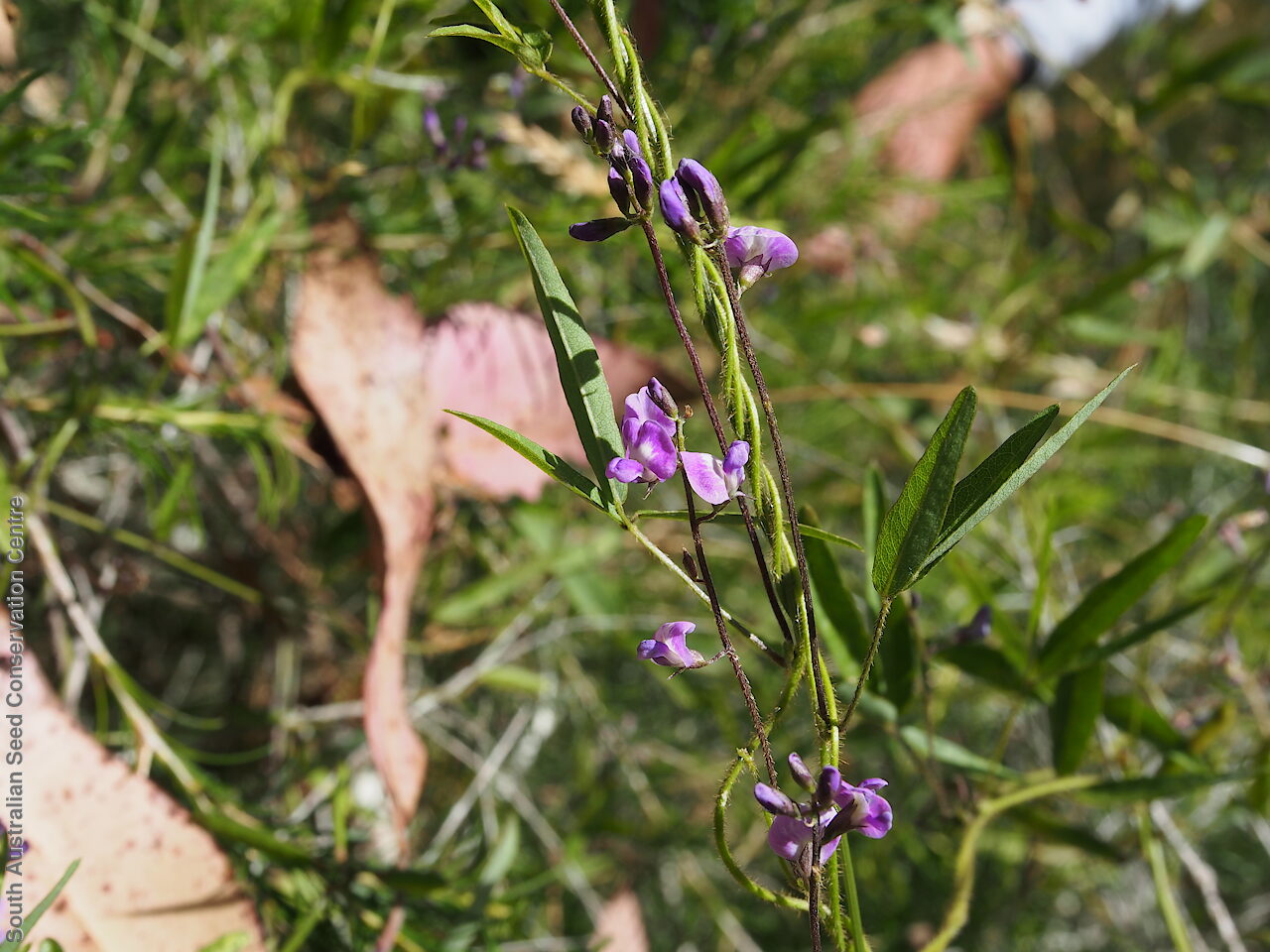
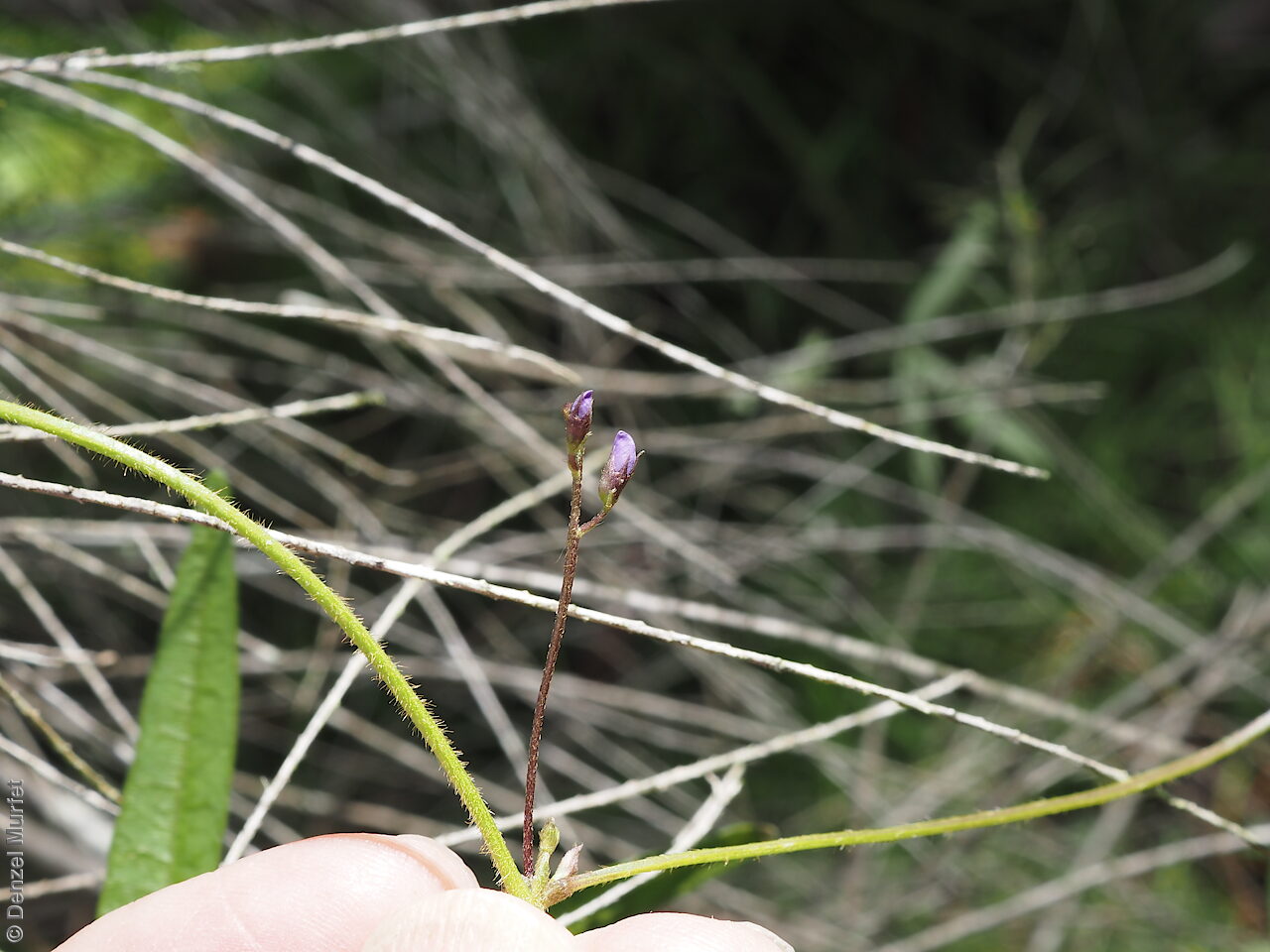
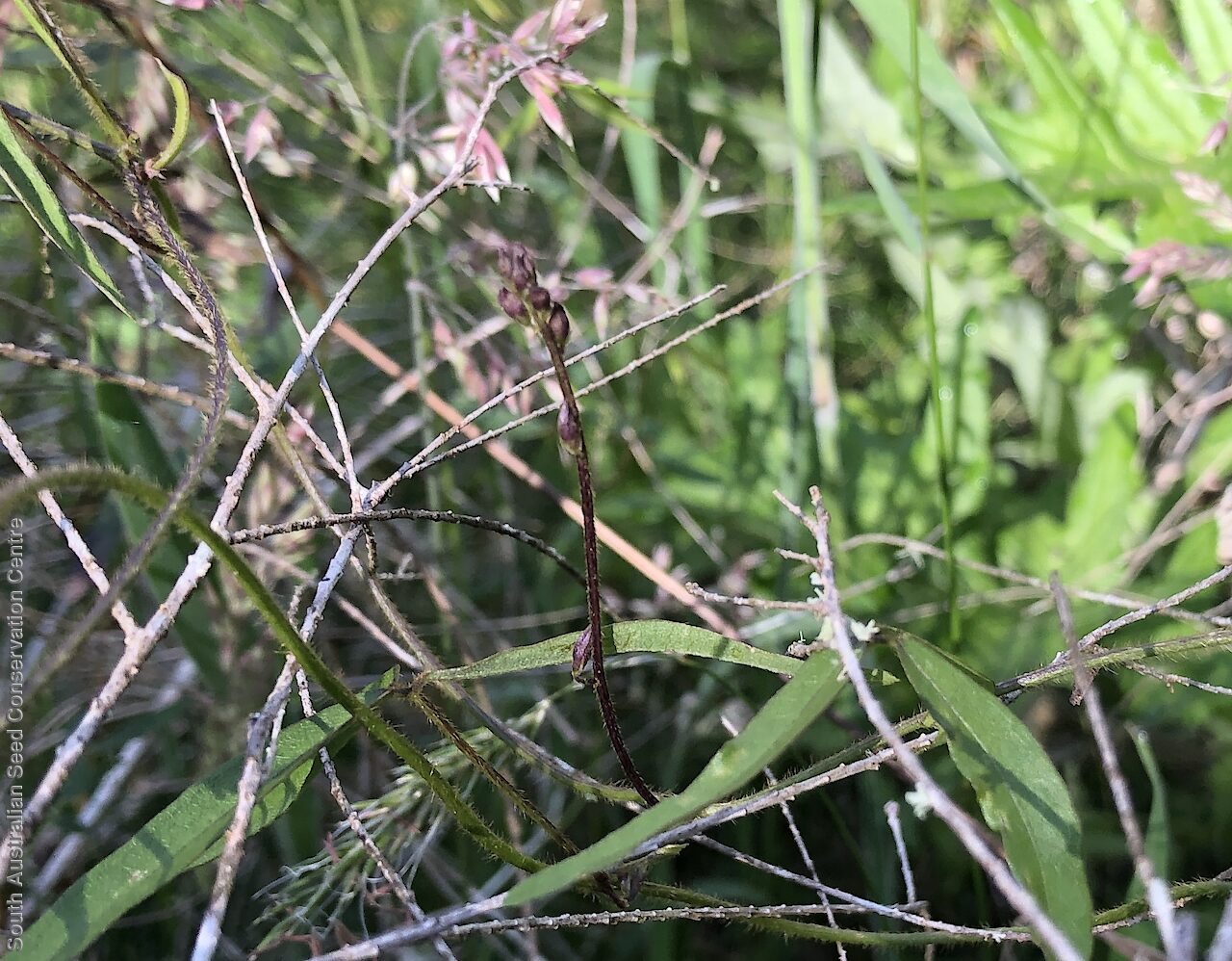
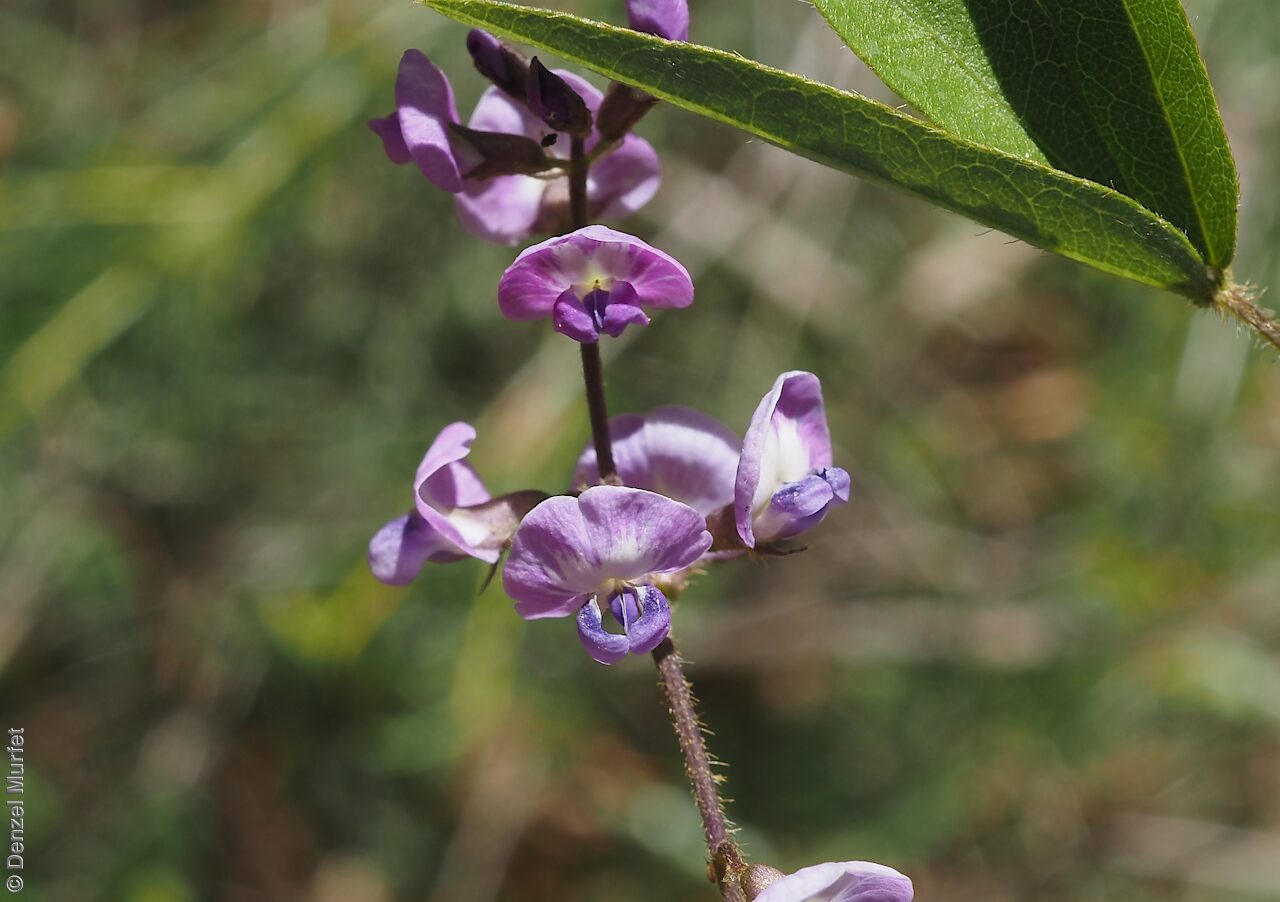
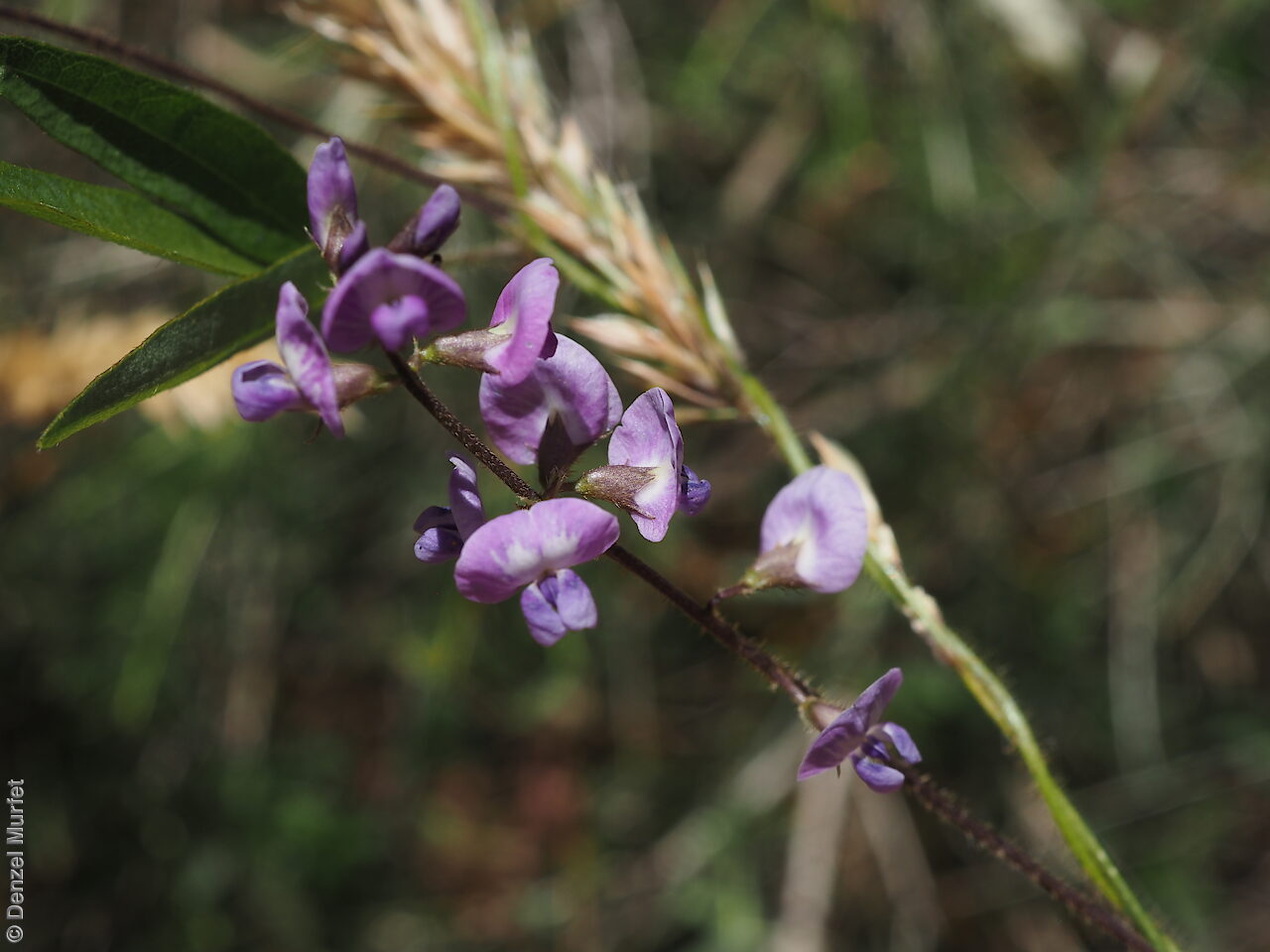
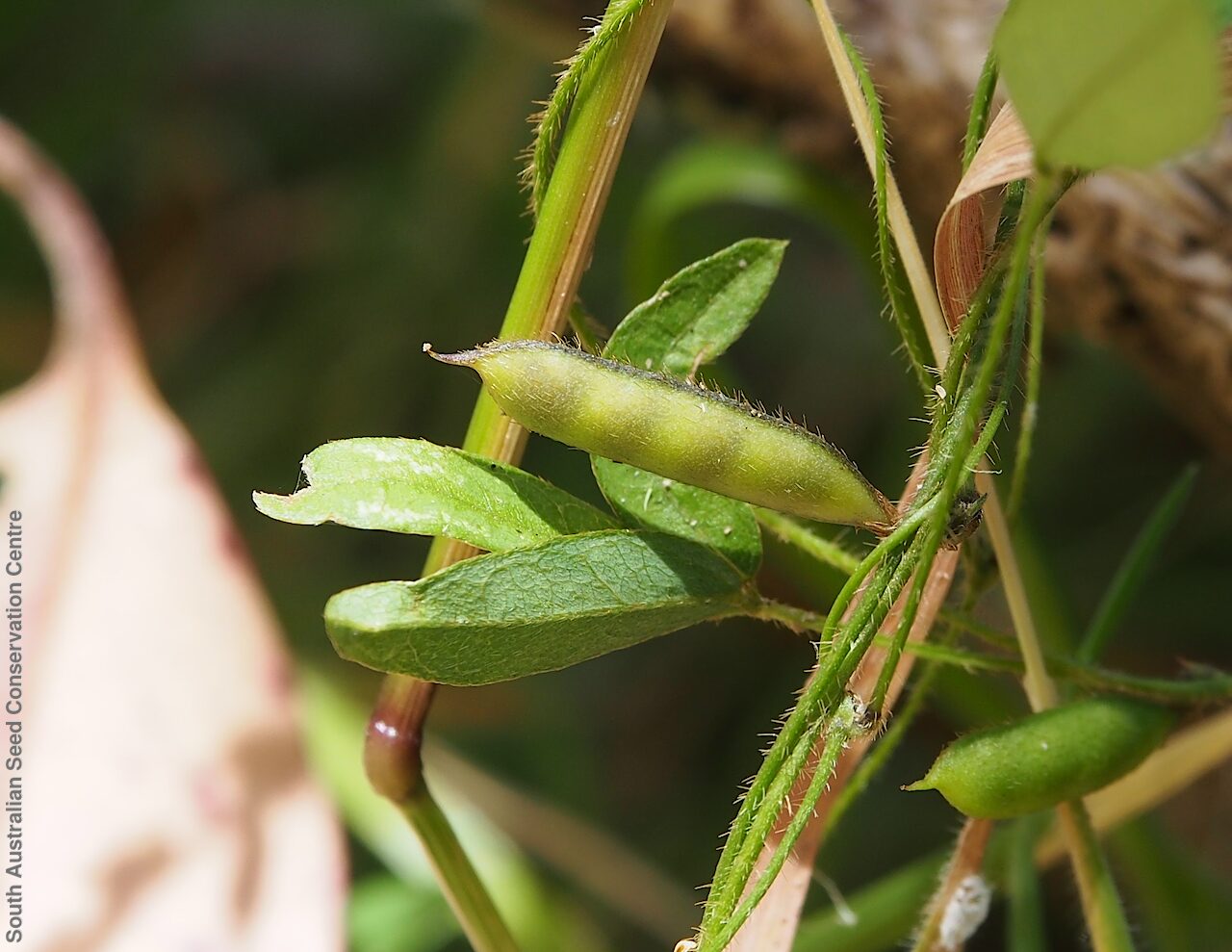
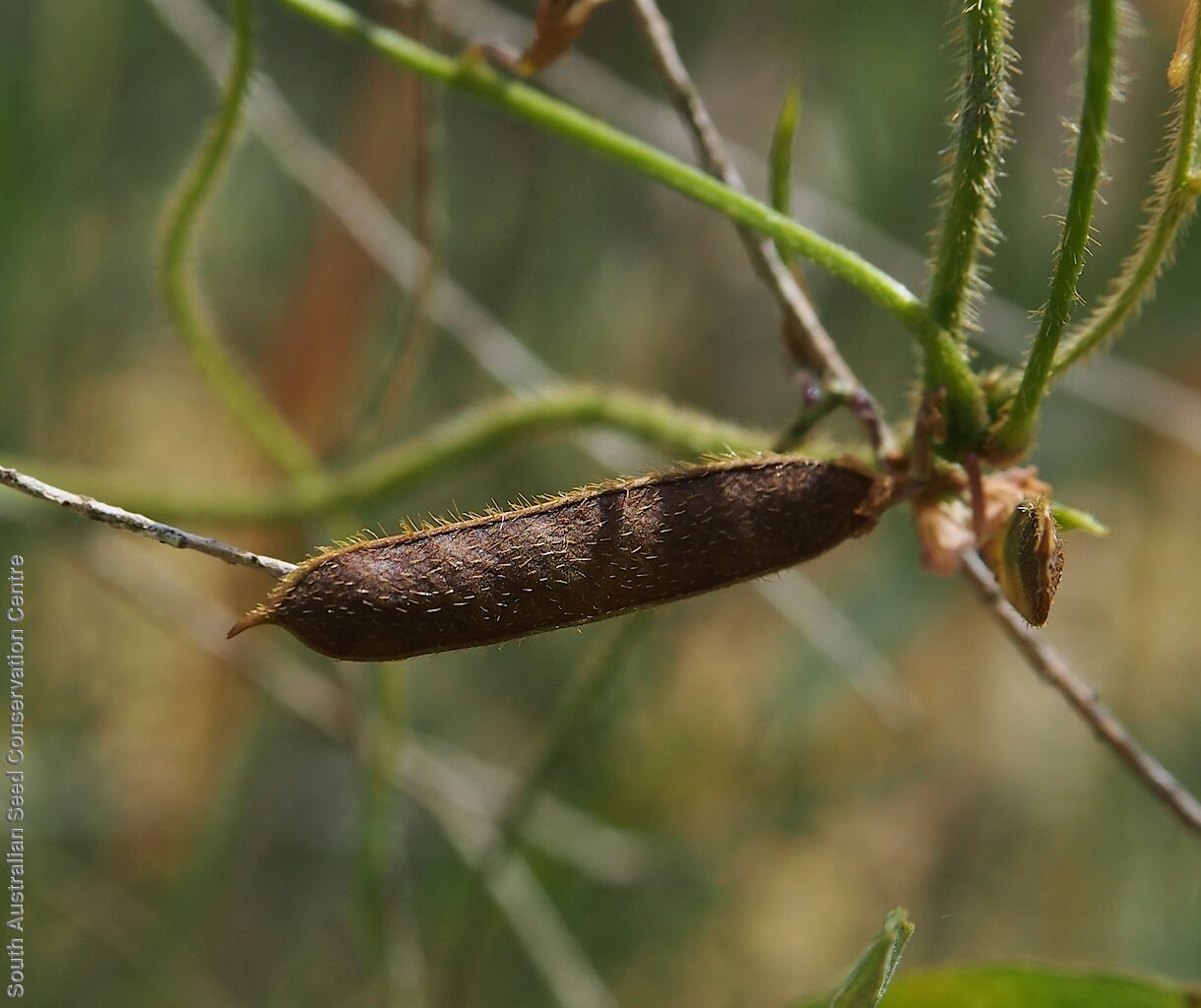
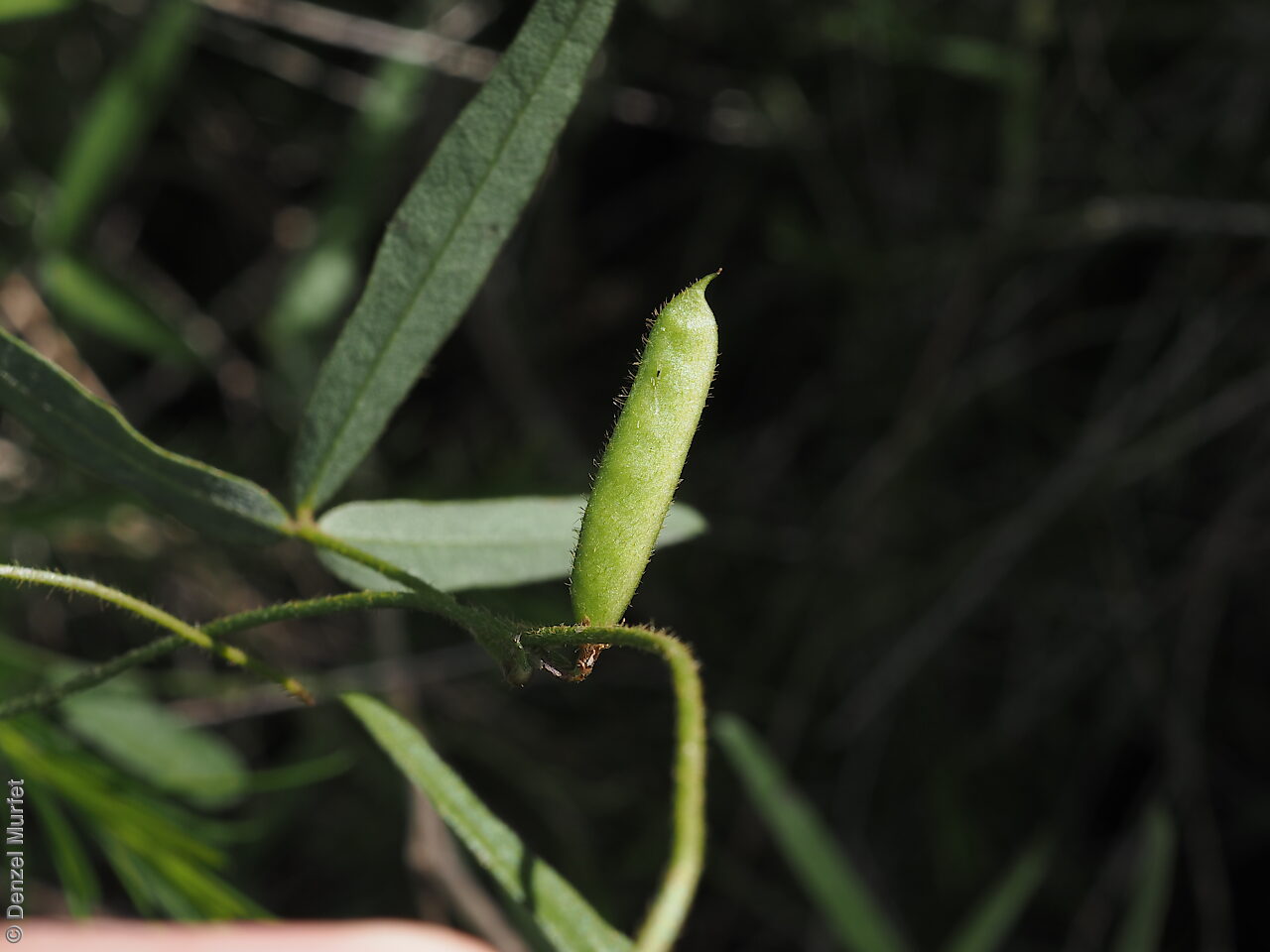
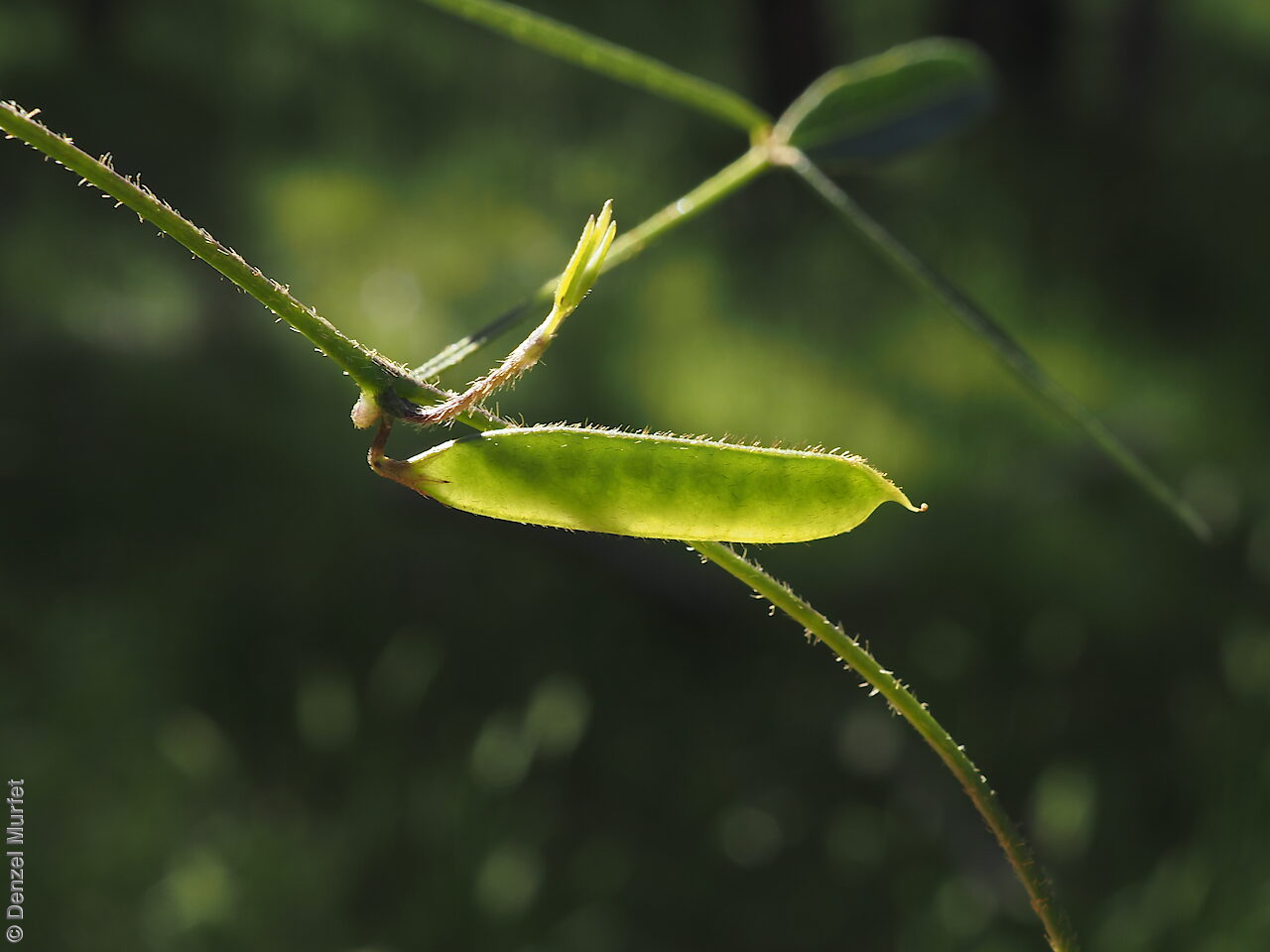
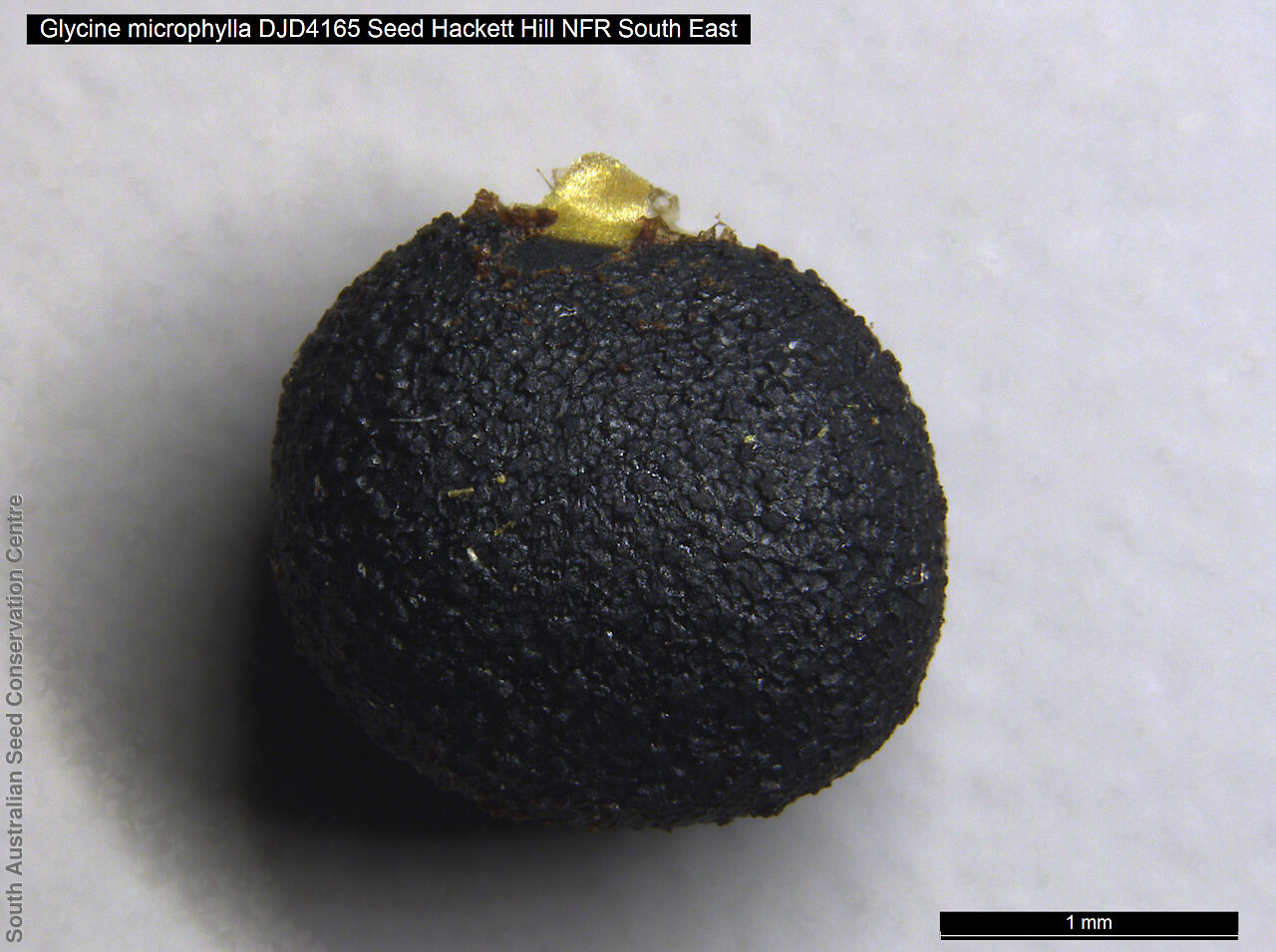
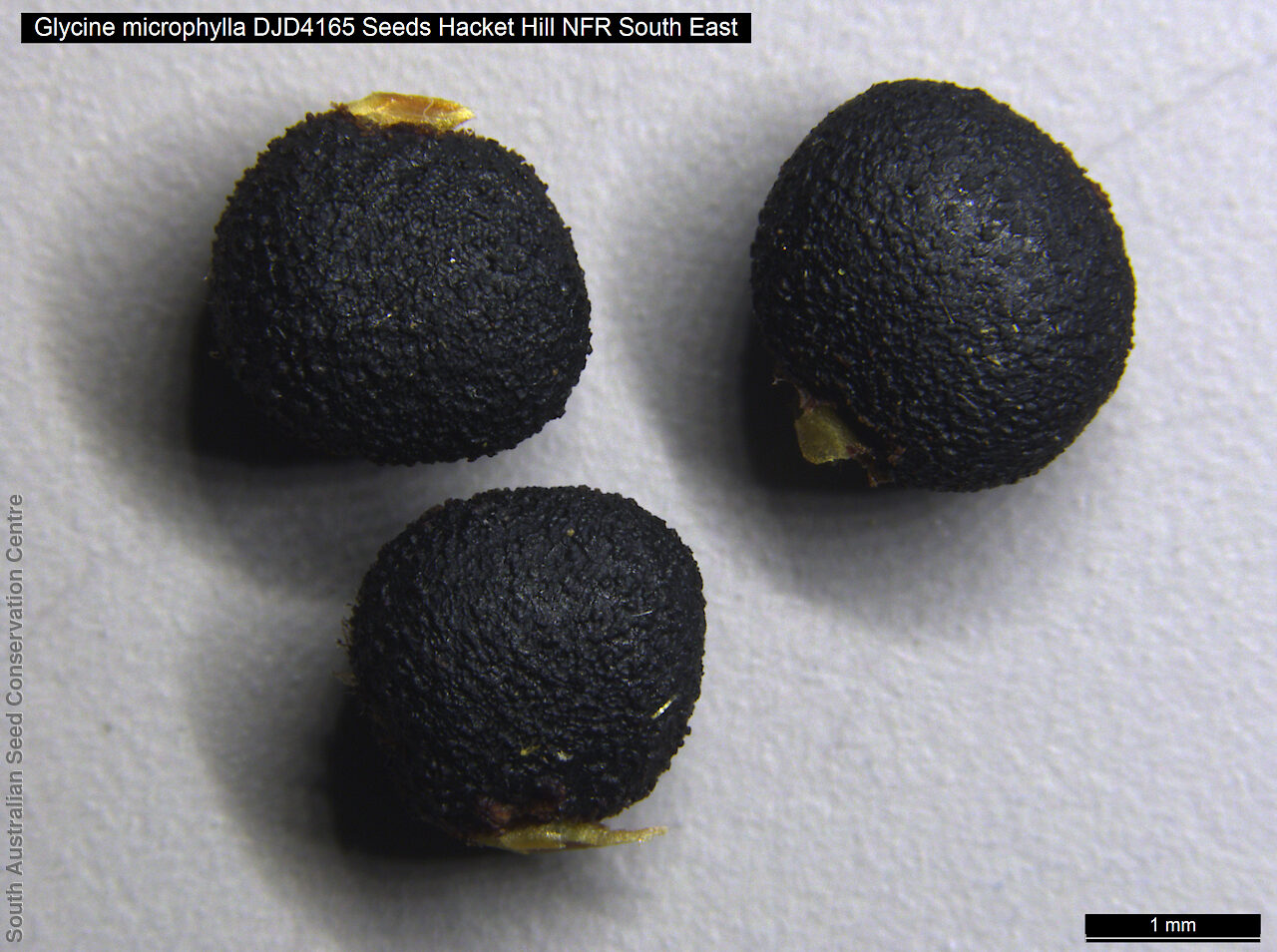
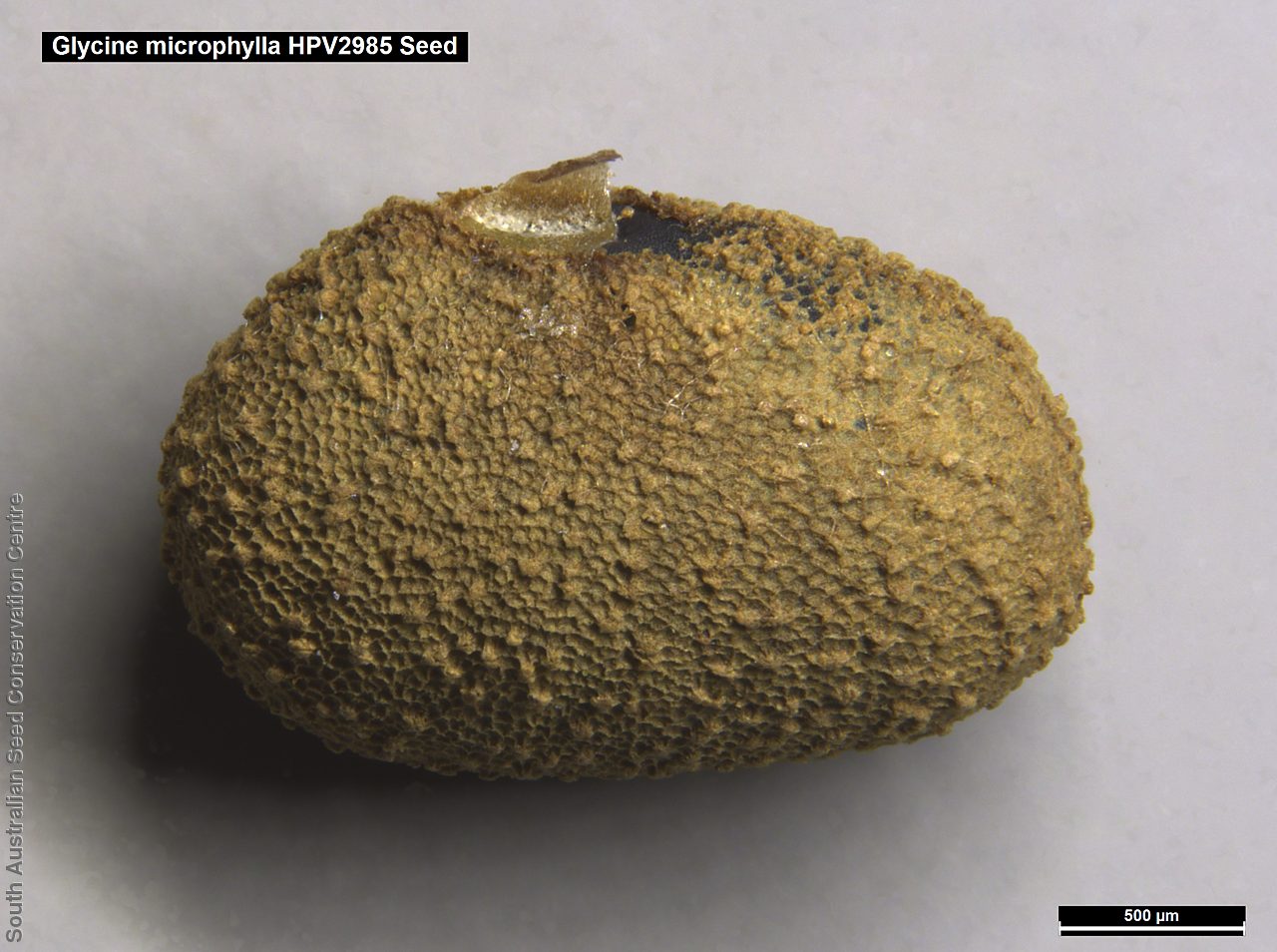
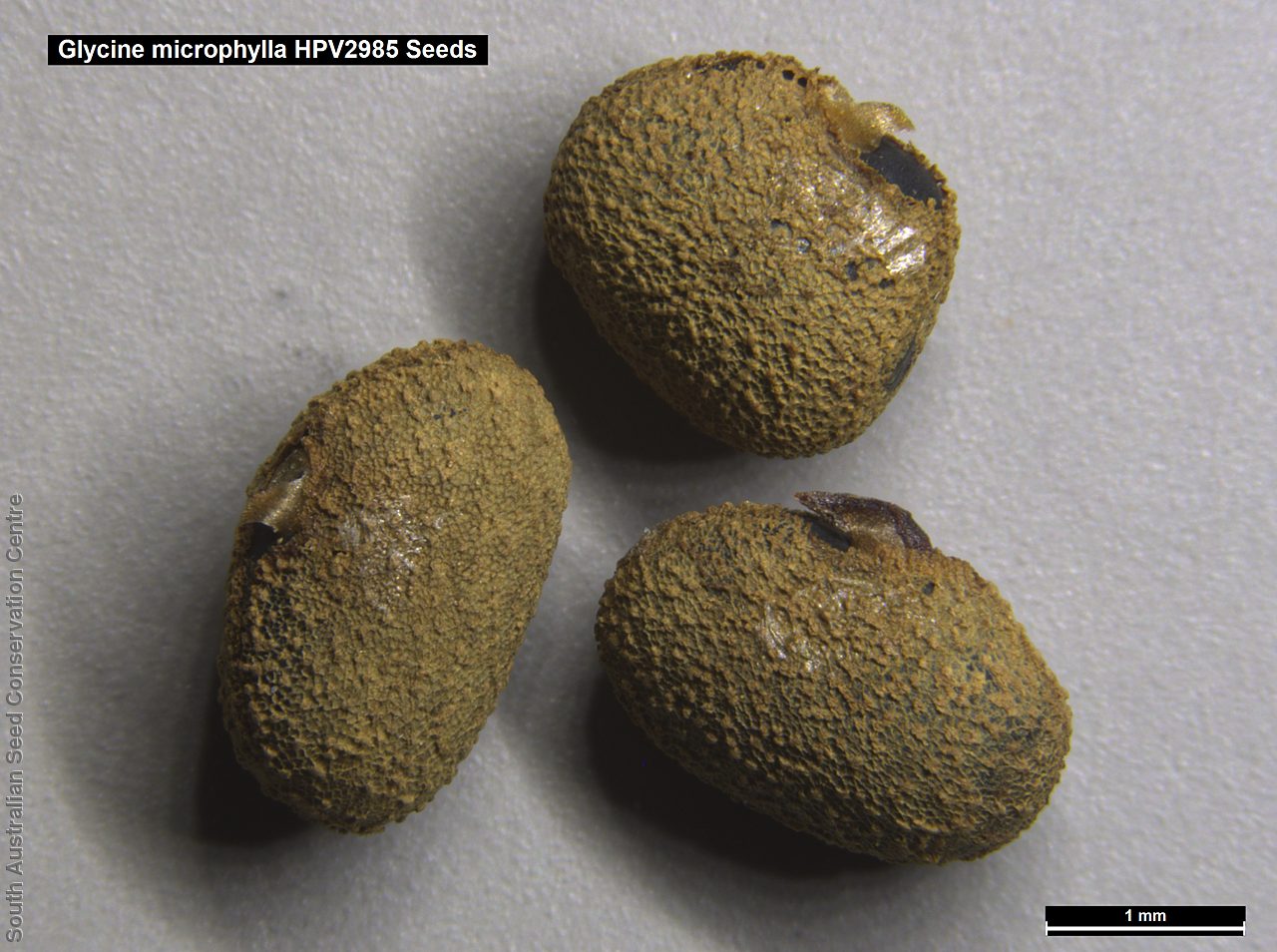


Botanical art
Prior names
Leptolobium microphyllum
Leptocyamus microphyllus
Common names
Small-leaf Glycine
Etymology
Glycine from the Greek 'glykys', meaning sweet, referring to the sweet roots and leaves of some species of the Glycine (soybean) genus. Microphylla from the Greek 'micros', meaning small and 'phyllon', meaning leaf.
Distribution and status
Found only in the lower South-east in South Australia, growing in moist semi-shady grassy areas in scrublands, open-forests and woodlands. Also found in Queensland, New South Wales, Victoria and Tasmania. Native. Very rare in South Australia. Rare in Tasmania. Common in the other States.
Herbarium region: South Eastern
AVH map: SA distribution map (external link)
Plant description
Scrambling perennial herb with elongated, stoloniferous, twining stems, hairy to glabrous. Leaves dimorphic; weakly pinnately trifoliate with first-formed leaves often palmately trifoliate and leaflets of upper leaves narrow-lanceolate to lanceolate, to 50 mm long and 6 mm wide; apices mostly acute; leaflets of lower leaves obovate to elliptic, to 50 mm long and 9 mm wide, apices acute or obtuse; upper surface sparsely hairy to glabrous, lower surface more densely hairy. Inflorescence a raceme with 5-13 white, pink or purplish pea-flowers. Flowering between October and March. Fruits are hairy dark brown linear pod to 30 mm long and 4 mm wide. Seeds are brown ovoid to oblong seed to 2.5 mm long and 2 mm wide, with a tuberculate surface. Seed embryo type is bent.
Seed collection and propagation
Collect seeds between December and April. The pods of this pea change colour from pale green to a dark brown when mature. The seed pods twist and burst apart expelling the seeds when fully ripe so timing of seed collections is important. Monitor fruits closely, bag maturing fruits or place groundsheets under plants to catch seeds . Alternatively, the pods can be harvested close to maturity (when they turn brown) and fully dried in a warm area. Place the pods in a tray and cover with paper to prevent seeds popping out and leave to dry for a week. Then rub the dried pods to dislodge the seeds. Use a sieve to separate any unwanted material. Store the seeds with a desiccant such as dried silica beads or dry rice, in an air tight container in a cool and dry place. This species has physical dormancy that needs to be overcome for the seed to germinate (e.g. nicking or softening the seed coat).
| Location | No. of seeds (weight grams) | Number of plants | Date collected | Collection number Collection location | Date stored | % Viability | Storage temperature |
|---|---|---|---|---|---|---|---|
| BGA | 100 (2.1 g) | 3 | 1-Feb-2006 | HPV2985 South Eastern | 1-Aug-2006 | -18°C | |
| BGA | 516 (1.471 g) | 50+ | 11-Jan-2023 | DJD4165 South Eastern | 20-Jun-2023 | 92% | -18°C |
Number of plants: This is the number of plants from which the seeds were collected.
Collection location: The Herbarium of South Australia's region name.
% Viability: Percentage of filled healthy seeds determined by a cut test or x-ray.